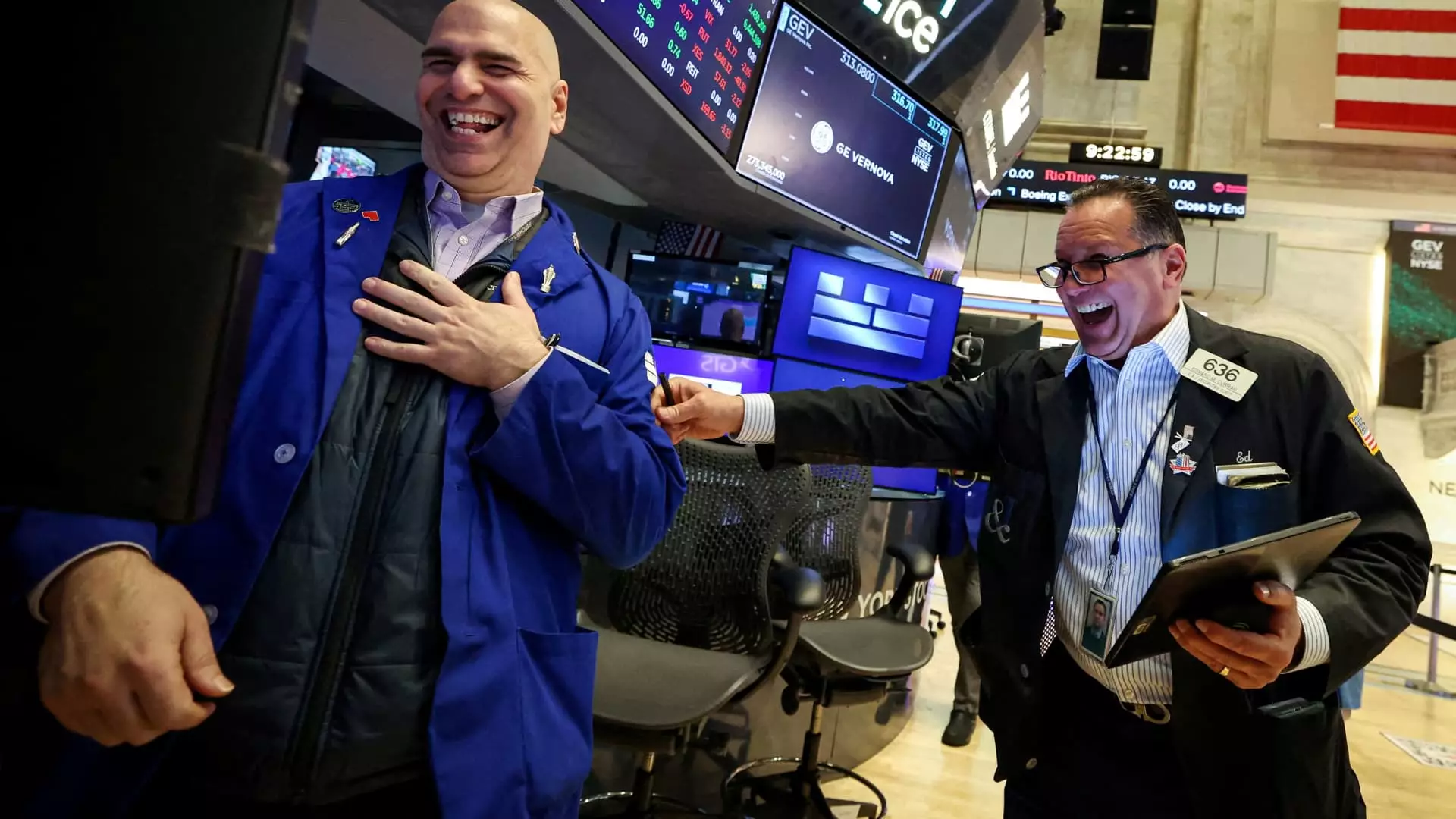In the world of finance, a rollercoaster ride rarely arrives without twists and turns. The stock market’s recent upswing, characterized by a staggering two-day rally, can largely be attributed to the tumultuous actions of short sellers scrambling to cover their losses. After a series of harrowing events culminating from President Trump’s abrupt tariff policy, many investors found themselves ensnared in a trap of their own making, one of anxiety and urgency. Hedge funds opted to double down on their bearish positions, convinced the market would plummet further, only to be blindsided when it rallied unexpectedly.
Short selling, a strategy notorious for its high level of risk, involves borrowing stocks and selling them with the hope of buying back at a lower price. However, when unexpected market conditions cause a rapid price increase—dubbed a “short squeeze”—these short sellers are forced to frantically buy back their borrowed assets to minimize losses, further fueling the rally. The air is thick with anxiety, as traders watch a market bubble inflate based not on quality earnings or economic indicators, but rather on the frantic actions of those caught in a precarious game of chance.
The Illusion of Stability
It’s critical to recognize that this rally seems devoid of any strong rationale, rooted more in the behavior of traders than in substantial economic growth or corporate earnings. As evidenced by Goldman Sachs’ reports, the market appeared ready to rebound primarily due to short-covering tactics rather than any solid groundwork. On paper, the surge seems impressive—as if the market is rebounding back to health. In reality, it may represent nothing more than an artificial inflation, a mirage founded on speculative moves rather than consistent value.
The rally’s reliance on the fickle notions of a few short sellers raises fundamental questions about market health. Are we genuinely witnessing a turnaround, or are we merely observing a series of reactionary splashes in an otherwise stagnant pond? The sentiment echoed by financial analysts, where they emphasize the need for substantial macro purchases to back a sustainable rally, signals a lack of conviction. Reports suggest that hedge funds remain in a holding pattern, not ready to pivot to long positions despite the market’s brisk rise.
Political Whispers and Market Movements
The convoluted nature of this market upturn reflects the broader chaos surrounding the Trump administration and its erratic communication strategies. President Trump’s shifting rhetoric regarding China and the Federal Reserve has fostered an environment of volatility, further complicating investor sentiment. While temporary optimism surged on weak signals of potential trade agreements, the implementation of sustainable policies remains shrouded in uncertainty. Such instability not only nurtures investor caution but also significantly dampens confidence in robust and lasting economic improvements.
These political fluctuations, particularly Trump’s contradictory statements about Federal Reserve Chair Jerome Powell, continue to play a pivotal role in shaping market dynamics. Investors look for clarity and stability—elements that seem perpetually out of reach. A market buoyed by whims and speculation, rather than solid economic fundamentals, is a precarious dance teetering on the edge of chaos.
A Cautionary Tale for Investors
As thrill-seeking traders bask in the ephemeral glow of this stock market rally, it’s imperative to underscore the reality lurking beneath the surface. The sweet allure of quick gains could easily lead to unpleasant ramifications for unscrupulous investors. Financial markets are notorious for their unpredictable nature; what’s euphoric today could be disastrous tomorrow. It’s all too easy to get swept away in the excitement of a rally, but a discerning investor should recall that true success lies in understanding the underlying factors driving market shifts.
The frenetic buying prompted by short squeezes is reminiscent of a mirage in a desert—impressive from afar, but ultimately lacking any substantial sustenance. Relying on erratic market turns influenced by short covering reveals a precarious path fraught with danger. Now, more than ever, investors must navigate these uncertain waters with a blend of caution, analysis, and critical thought, lest they find themselves in the depths of distress, grappling with losses borne from the chaos of the market’s whims.

